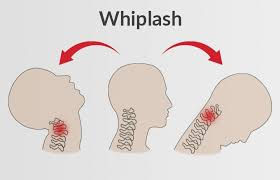Spondylolisthesis: When A Stress Fracture Worsens
- Christopher nour

- Jan 23, 2024
- 2 min read
Spondylolisthesis is a condition in which one vertebra in the spine slips forward over the vertebra below it, usually in the lower back. This can lead to lower back pain, stiffness, and nerve damage, and can be caused by a variety of factors, including genetics, trauma, and degenerative changes in the spine.

Fortunately, physiotherapy can be an effective treatment for spondylolisthesis. Our physiotherapists can work with a patient to develop a personalised treatment plan that is designed to relieve pain, improve flexibility and mobility, and strengthen the muscles of the lower back.
The first step in treating spondylolisthesis with physiotherapy is to rest and allow the condition to stabilise. During this time, our physiotherapists can recommend gentle exercises and stretches that are designed to maintain flexibility and range of motion in the lower back without putting undue stress on the affected vertebra.
Once the condition has stabilised, our physiotherapist can work with the patient to develop a comprehensive rehabilitation program that includes a combination of manual therapy, exercise, and education.
Manual therapy, such as massage can be effective in relieving muscle tension and improving range of motion in the lower back. Exercise is an important part of the rehabilitation program, as it can help to strengthen the muscles of the lower back, improve posture, and increase flexibility.
Education is also an important component of physiotherapy for spondylolisthesis. Our physiotherapists can teach patients how to avoid activities that may aggravate their condition, as well as how to maintain good posture and body mechanics to prevent further injury.
In addition to physiotherapy, other treatments for spondylolisthesis may include the use of back braces to stabilize the affected area and reduce pain, as well as medications to manage pain and inflammation.
In more severe cases, surgery may be necessary to correct the position of the affected vertebra. In these cases, physiotherapy can be an important part of the post-surgical rehabilitation process, helping patients to regain strength, mobility, and function in the affected area.
Spondylolisthesis can be a painful and debilitating condition, but physiotherapy can be an effective treatment option. A comprehensive rehabilitation program that includes manual therapy, exercise, and education can help patients recover from spondylolisthesis and prevent further injury. If you are experiencing symptoms of spondylolisthesis, it is important to seek medical attention to determine the underlying cause and appropriate treatment options. Book in a session with one of our fantastic physiotherapists today and start your journey to rehab.



Comments